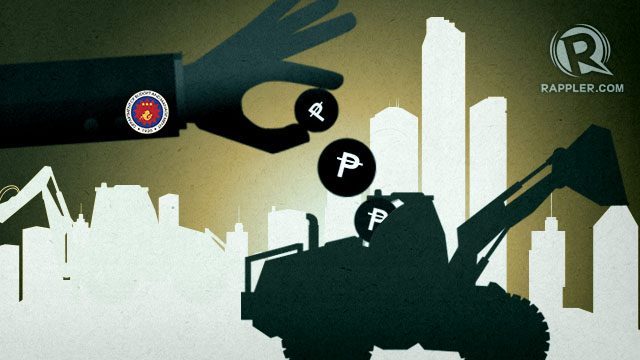SUMMARY
This is AI generated summarization, which may have errors. For context, always refer to the full article.

MANILA, Philippines – A proposed shift in budgeting systems that would improve the delivery of services could happen in 2019.
But the House of Representatives suspended deliberations on the 2019 national budget, in what seemed to be a “clash” between the executive and the legislative branches.
Lawmakers are opposed to the shift to cash-based budgeting, arguing that huge cuts will be implemented should they pass the proposed expenditure program.
However, the Department of Budget and Management (DBM) maintained that the shift would “force the agencies” to speed up completion of projects and actually utilize their funds within the year.
So what’s the fuss about the issue? Here’s what you need to know:
What is cash-based budgeting?
A cash-based budgeting system limits contractual obligations and disbursing payments to goods delivered and services rendered within the fiscal year.
This means implementing agencies need to complete their contracts by the end of 2019, regardless of possible delays. Projects that are “not implementation-ready” will be removed from the proposed budget.
In other words, the system promotes fiscal discipline and better planning among agencies in spending or using their resources.
Under the system, an extended payment period of 3 months after the fiscal year would be provided to give more time for government agencies to make their payments.
If a certain project has an implementation period that goes beyond 12 months, they may apply for a multi-year obligation authority before entering into a contract.
The implementing agency is required to show the schedule of annual cash requirements for a multi-year project.
How is it different from an obligation-based budget?
For the longest time, agencies’ budgets have followed two-year, obligation-based budgeting, which disburses payments as obligations or commitments that may not necessarily be delivered within the same year.
Budget Secretary Benjamin Diokno said that the problem with this set-up is that agencies tend to enter into contracts before the year ends – just so they can commit to projects – even if they will not be completed within the same year.
This also means that inspection, verification, and payment for the said projects are done even after the fiscal year when the contracts were awarded.
An example of this would be obligations for a school building being made in late 2017, with the actual project being finished in 2018 yet.
Diokno also said that tracking agency spending is difficult in obligation-based budgeting. In some cases, budgets for 3 fiscal years are being tracked given the multi-year budgeting set-up.
More challenging?
The budget chief said that the cash-based set-up would dramatically reduce underspending – a perennial problem in the Philippines that he once described as “epic incompetence” during the Aquino administration.
But agencies – especially those that receive the lion’s share of funds – see the shift in budgeting systems as “challenging.” (READ: Education, infra get a third of proposed P3.757-T 2019 nat’l budget)
For instance, the Department of Public Works and Highways had an appropriation of P662.69 billion in 2017, but it was able to disburse only roughly a third of its budget or P230 billion within the year, according to the Commission on Audit (COA).
State auditors also found that the Department of Transportation spent only 25.6% of its P71.2-billion budget, leading to delay of implementation of most of its projects.
Diokno said that shifting to a cash-based system is needed to accomplish the government’s centerpiece infrastructure program Build, Build, Build.
“Given the size of our budget because of the Build, Build, Build, we have to change the way we use our budget. Otherwise, we will not be able to complete all the projects,” he said.
According to the DBM, this system would double expenditures for infrastructure services and expand social services from 30% in 2017 to 40% in 2022.
Will the shift be approved?
The budget department has since been appealing to lawmakers to pass the Budget Reform Bill which institutionalizes cash-based budgeting system.
In March, House Bill No. 7302 was approved on third and final reading, but a movement within the House now wants it recalled after they found the system confusing.
Lawmakers in the House also want the DBM to revert to obligation-based budgeting.
At the Senate, the counterpart measure remains pending. Budget deliberations were also postponed.
Diokno maintained that Congress cannot “return” the submitted 2019 proposed budget. He said they may approve or reject it, risking a possible reenacted budget.
The worst case scenario is that government expenditures next year will be funded by the same amount and within the same allocations as provided in the 2018 approved budget. – Rappler.com
Add a comment
How does this make you feel?
There are no comments yet. Add your comment to start the conversation.